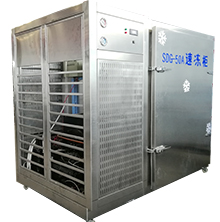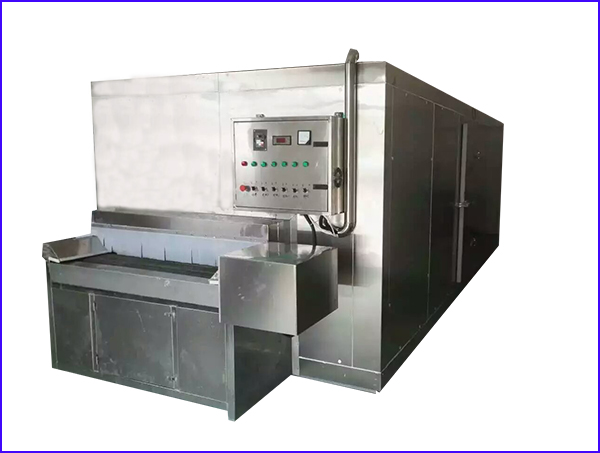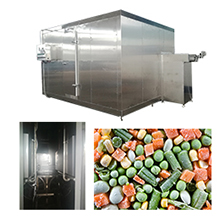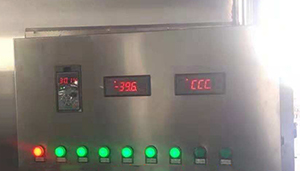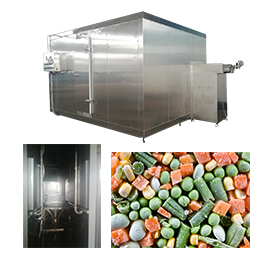Food freezing review
Freezing is the one food process unit operation in which the temperature is reduced until its thermal center reaches −18℃, accompanied by the consequent crystallization of water. This results lowering the water activity (aw) of the food, inhibiting the spoilage by microorganisms and/or chemical reactions. In the food commodity industry, the process is called IQF or Individually Quick Frozen (flash freezing).
Frozen food economic freezing temperature
Foods should be frozen to an internal temperature of -18°C (0°F) or lower and kept at -18°C or lower throughout transport and storage.
The choice of -18°C or below as the recommended temperature for freezing and storage is based on substantial data and represents a compromise between quality and cost. Microbiologically, -18°C° storage would not be strictly required since pathogens do not grow below about 3.3°C and normal food spoilage organisms do not grow below -9.5°C. On the other hand, transportation and frozen storage facilities are expected to vary somewhat at any chosen temperature setting. Therefore, the use of -18°C provides a reasonable measure of safety against food spoilage organisms and a still greater margin of safety against pathogens; and, indeed, frozen foods have enjoyed an excellent public health record over the years.
Many vegetables, fruits, and non fatty meats, if properly packaged and frozen, retain good quality during storage at -18°C for 12 months or longer.
[Source: food science https://www.academia.edu/37859281/Food_science]
Commercially frozen foods varieties
- Fruits: strawberries, oranges, raspberries, either whole or pureed, or as juice concentrates
- Vegetables: peas, green beans, sweet corn, spinach, and potatoes
- Fish fillets and sea foods: cod, plaice, shrimps and crab meat including fish fingers, fish cakes or prepared dishes with an accompanying sauce
- Meats: beef, lamb, poultry as carcasses, boxed joints or cubes, and meat products (sausages, beefburgers, reformed steaks)
- Baked goods :bread, cakes, fruit and meat pies
- Prepared foods: pizzas, desserts, ice cream, complete meals and cook–freeze dishes.
[source: FOOD FREEZING Prof. Vinod K. Jindal, PhD]
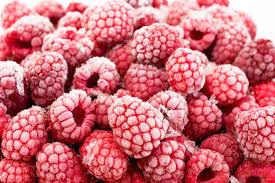
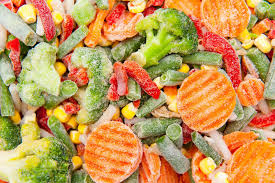
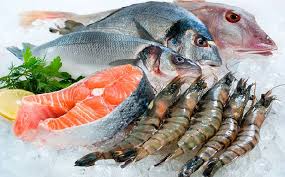
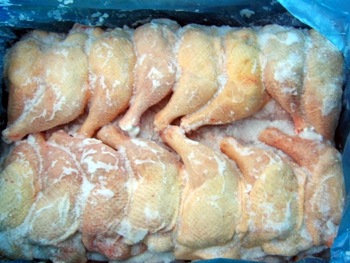
Air blast freezer
The more commonly used and least expensive individual quick frozen machine is air blast freezer, includes cabinet, tunnel, fluidized bed, spiral freezers.
Air blast freezers typically are operated at temperatures of -30 to -45°C and a velocity of 1.5–6.0 m s-1.
Cabinet blast freezers
Food is frozen in batch In batch operation which is stacked on trays in cabinets.
Tunnel belt air blast freezer
Foods, such as loose vegetables, or in a package, are continuous put on the mesh belt moving through an insulated tunnel. The speed is adjustable according to the required freezing time.
Fluidized bed air blast freezer
A modified Rapid Freezer, cold air is blown up through a wire mesh belt that conveys the particulate products such as peas, beans or shrimp. fluidization occurs. Each food comes in contact with air individually. Resulting a IQF (individually quick frozen) form. Freezing times commonly are in the order of minutes.
Spiral air blast freezers
Designed for large volume scale food frozen with less installation space, having a continuous flexible mesh belt which is formed into spiral tiers and carries food up through a refrigerated chamber.


